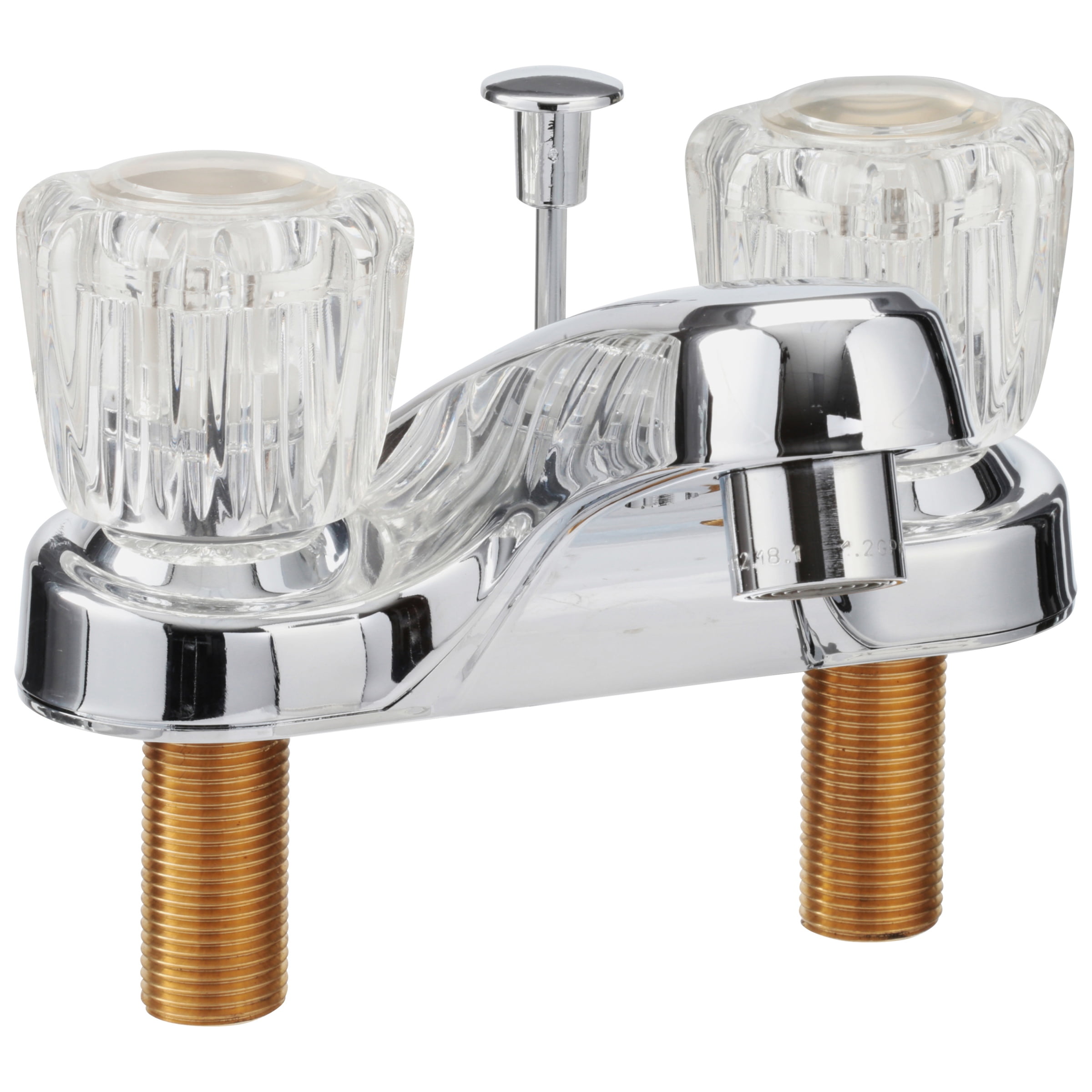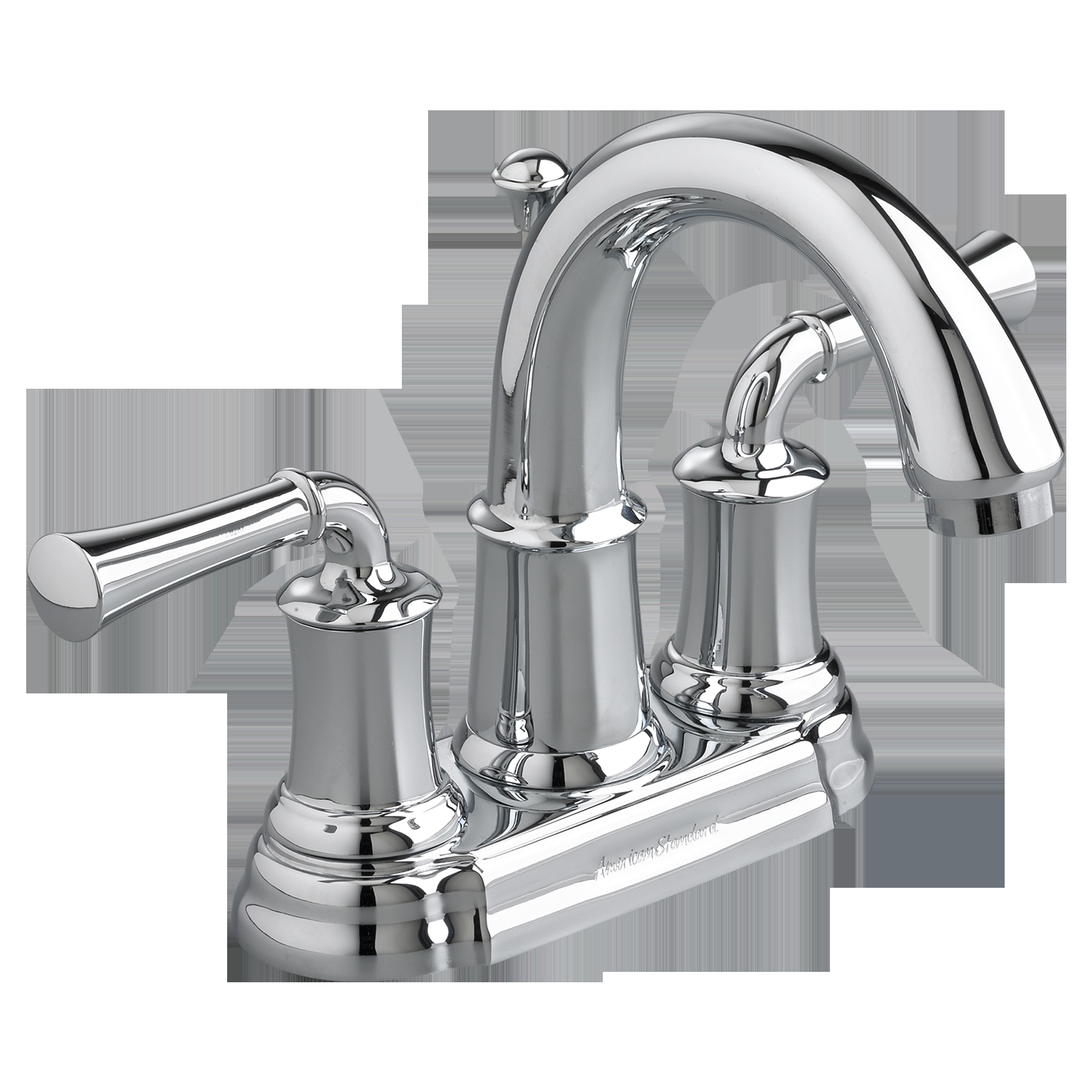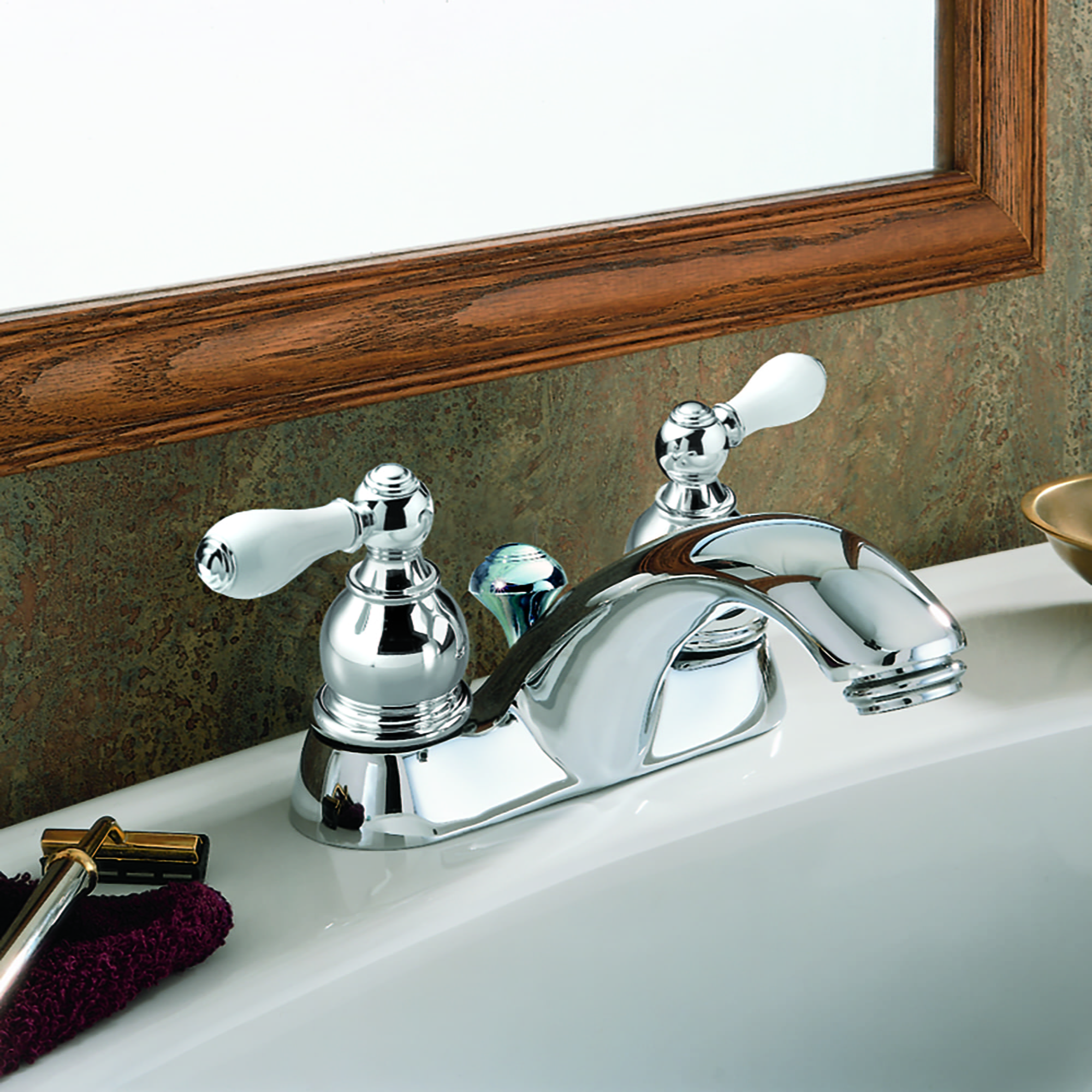Bathroom Faucet Types: Bathroom Faucets 4 Inch Spread Brushed Nickel
Choosing the right bathroom faucet is crucial for both functionality and aesthetics. With a 4-inch spread, you have several options, each with its own advantages and disadvantages.
Lever Handle Faucets
Lever handle faucets are known for their ease of use and modern aesthetic. They feature a single lever that controls both hot and cold water flow.
- Functionality: Lever handles offer precise control over water temperature and flow rate. They are particularly user-friendly for individuals with limited dexterity or arthritis.
- Aesthetics: Lever handles are available in a wide range of styles, from sleek and minimalist to contemporary and ornate. They are commonly found in modern and transitional bathrooms.
- Common Uses: Lever handle faucets are suitable for various bathroom applications, including sinks, tubs, and showers. They are a popular choice for contemporary and modern bathroom designs.
Cross Handle Faucets
Cross handle faucets are a classic choice, known for their traditional elegance and durability. They feature two separate handles, one for hot water and one for cold.
- Functionality: Cross handles offer precise control over water temperature and flow rate, allowing for greater control over the water flow.
- Aesthetics: Cross handle faucets are often associated with traditional and vintage bathroom designs. They are available in various finishes, including polished chrome, brushed nickel, and oil-rubbed bronze.
- Common Uses: Cross handle faucets are frequently found in traditional and transitional bathrooms. They are a popular choice for vessel sinks and pedestal sinks.
Single-Hole Faucets
Single-hole faucets are designed for installation in a single hole on the countertop. They typically feature a lever handle or a single knob that controls both hot and cold water flow.
- Functionality: Single-hole faucets offer a streamlined look and save space on the countertop. They are typically easy to install and maintain.
- Aesthetics: Single-hole faucets are available in various styles, from minimalist and modern to traditional and ornate. They are a popular choice for smaller bathroom sinks and countertops.
- Common Uses: Single-hole faucets are suitable for various bathroom applications, including sinks, tubs, and showers. They are particularly well-suited for vessel sinks and countertop sinks.
Brushed Nickel Finish

Brushed nickel is a popular finish for bathroom faucets, known for its understated elegance and durability. This finish offers a unique combination of style and practicality, making it a versatile choice for various bathroom designs.
Characteristics of Brushed Nickel
Brushed nickel achieves its distinctive look through a process called brushing, where a fine abrasive is used to create a series of parallel lines on the surface of the metal. This process not only enhances the aesthetic appeal but also adds a layer of durability and resistance to fingerprints.
- Durability: Brushed nickel is known for its durability, resisting scratches and wear and tear better than polished finishes. The brushed texture helps to mask minor imperfections, making it a practical choice for high-traffic areas like bathrooms.
- Fingerprint Resistance: The brushed texture effectively hides fingerprints and smudges, making it a low-maintenance option. This is particularly beneficial in bathrooms, where surfaces can easily accumulate fingerprints and watermarks.
- Aesthetic Appeal: Brushed nickel offers a warm, sophisticated, and slightly industrial look. Its subtle sheen and textured surface create a unique visual appeal that complements various bathroom styles, from modern to traditional.
Comparison with Other Finishes
Brushed nickel stands out among other popular bathroom faucet finishes due to its unique combination of style and practicality. Let’s compare it to chrome, oil-rubbed bronze, and matte black:
| Finish | Characteristics | Advantages | Disadvantages |
|---|---|---|---|
| Brushed Nickel | Subtle sheen, textured surface, durable, fingerprint-resistant | Versatile, low-maintenance, warm look | May show scratches more prominently than polished finishes |
| Chrome | Highly polished, shiny, reflective | Classic, elegant, easy to clean | Prone to fingerprints and watermarks, can appear cold |
| Oil-Rubbed Bronze | Warm, rich, rustic, textured | Unique, complements traditional and farmhouse styles, hides imperfections | Can be difficult to clean, may show patina over time |
| Matte Black | Sophisticated, modern, non-reflective | Trendy, sleek, hides fingerprints | Can show water spots more prominently, requires careful cleaning |
Complementary Bathroom Styles
Brushed nickel’s versatility allows it to seamlessly integrate into various bathroom styles.
- Modern Bathrooms: Brushed nickel’s sleek and understated elegance complements modern bathrooms with clean lines and minimalist designs. It pairs well with white or gray tiles, glass shower doors, and contemporary fixtures.
- Traditional Bathrooms: Brushed nickel can also add a touch of sophistication to traditional bathrooms. It complements warm wood tones, marble countertops, and classic fixtures, creating a timeless and elegant aesthetic.
- Transitional Bathrooms: Brushed nickel’s versatility makes it an ideal choice for transitional bathrooms that blend modern and traditional elements. It can be paired with both sleek and classic fixtures, creating a harmonious and cohesive look.
4-Inch Spread Installation

Installing a 4-inch spread bathroom faucet is a common plumbing project that can be accomplished with basic tools and a bit of patience. The 4-inch spread refers to the distance between the centers of the two holes in your sink where the faucet will be mounted. This installation guide provides a step-by-step approach to ensure a successful and leak-free installation.
Measuring and Drilling
Before you begin, it is essential to accurately measure the distance between the existing holes in your sink. This will ensure the new faucet is correctly positioned.
- Using a measuring tape, measure the distance between the centers of the existing holes in your sink. This distance should be approximately 4 inches for a standard 4-inch spread faucet.
- If the existing holes are not 4 inches apart, you will need to drill new holes. Use a drill bit that is slightly smaller than the diameter of the faucet’s mounting bolts. Ensure the drill bit is perpendicular to the sink surface for accurate hole placement.
- Once the holes are drilled, carefully clean the sink surface around the holes to remove any debris or metal shavings.
Connecting Water Lines
- Before connecting the water lines, turn off the water supply to your sink. Locate the shut-off valves for your hot and cold water lines and turn them to the off position.
- Connect the hot and cold water lines to the faucet. These lines are typically flexible and have compression fittings that make installation easier. Tighten the fittings securely, but avoid overtightening, which can damage the fittings.
- Connect the other ends of the water lines to the shut-off valves. Ensure the connections are tight and leak-free.
- After connecting the water lines, carefully turn the water supply back on. Check for leaks at all connections and tighten any loose fittings as needed.
Securing the Faucet
- Place the faucet base over the drilled holes in the sink. Align the faucet carefully, ensuring it is centered and level.
- Insert the faucet’s mounting bolts through the holes in the base and into the holes in the sink. Secure the bolts with the provided nuts or washers.
- Tighten the nuts or washers firmly, but avoid overtightening, which can damage the sink or faucet.
Alignment and Leak Prevention
- Once the faucet is secured, check for proper alignment. The faucet should be level and centered over the sink. Adjust the faucet’s position if necessary.
- Inspect all connections for leaks. If any leaks are present, tighten the fittings or replace any damaged components.
- If you are experiencing persistent leaks, it is best to consult a professional plumber for assistance.
Functionality and Features

The functionality and features of a bathroom faucet are crucial considerations for any homeowner. These features directly impact the user experience, water efficiency, and overall aesthetics of the bathroom. Understanding the available options allows you to choose a faucet that best suits your needs and preferences.
Water Flow Rate
Water flow rate is a significant factor influencing the faucet’s functionality. It refers to the volume of water discharged per unit of time, typically measured in gallons per minute (GPM).
A higher flow rate provides a more powerful water stream, which can be beneficial for tasks like rinsing dishes or filling a bathtub quickly. However, it also leads to increased water consumption, potentially impacting your water bill.
Lower flow rates, on the other hand, conserve water and are more environmentally friendly. They may be suitable for smaller sinks or situations where water conservation is a priority.
The following table summarizes the typical water flow rates for different types of bathroom faucets:
| Faucet Type | Water Flow Rate (GPM) |
|---|---|
| Traditional | 1.5-2.5 |
| Low-Flow | 1.0-1.5 |
| WaterSense Certified | 1.2 or less |
WaterSense is a program by the EPA that certifies products that meet water-efficiency standards.
Temperature Control, Bathroom faucets 4 inch spread brushed nickel
Temperature control mechanisms allow users to adjust the water temperature to their desired level.
Most bathroom faucets feature a single-handle design, where a lever controls both hot and cold water flow. This design provides precise temperature control and ease of use.
Some faucets offer separate hot and cold handles, requiring the user to adjust both knobs to achieve the desired temperature. This traditional design is less common in modern bathrooms.
For optimal temperature control, choose a faucet with a ceramic disc cartridge. These cartridges are durable and provide smooth, precise water flow adjustment.
Spout Reach
Spout reach refers to the distance from the faucet’s base to the end of the spout. This measurement is essential for determining the faucet’s suitability for your sink.
A longer spout reach provides more space for washing hands, filling containers, or cleaning larger items. It is particularly beneficial for larger sinks or those with a deep basin.
Shorter spout reaches are more suitable for smaller sinks or those with limited countertop space. They may also be preferred for aesthetic reasons, as they can create a more streamlined look.
The table below illustrates typical spout reaches for different faucet types:
| Faucet Type | Spout Reach (inches) |
|---|---|
| Standard | 4-6 |
| Extended Reach | 7-9 |
| Wall-Mounted | Variable, depending on installation |
Special Functionalities
Some bathroom faucets offer special functionalities that enhance their usability and convenience.
Pull-Down Sprayers
Pull-down sprayers are a popular feature that adds versatility to bathroom faucets. These sprayers are typically attached to the spout and can be pulled down and extended to reach various areas of the sink.
Pull-down sprayers are particularly useful for cleaning dishes, rinsing hair, or filling large containers.
Touch-Activated Controls
Touch-activated controls allow users to turn the water on and off with a simple touch. This feature can be convenient for individuals with limited mobility or those who prefer a hands-free experience.
Touch-activated faucets typically use sensors to detect hand movement and activate the water flow.
Other Features
Other special functionalities may include:
- Magnetic Docking: This feature ensures the pull-down sprayer retracts smoothly and securely into its original position.
- Water-Saving Technology: Some faucets incorporate features like aerators or flow restrictors to reduce water consumption without compromising performance.
- LED Lighting: Certain faucets integrate LED lights into the spout or handle, providing visual cues for water temperature.
Maintenance and Care
Maintaining a brushed nickel bathroom faucet is essential for preserving its beauty and functionality. Regular cleaning and proper care can prevent mineral buildup, prolong its lifespan, and ensure a smooth and reliable operation.
Cleaning the Faucet
Regular cleaning is crucial for maintaining the appearance and functionality of your brushed nickel faucet.
- Use a soft, damp cloth and mild dish soap to gently clean the faucet. Avoid harsh chemicals or abrasive cleaners that can damage the finish.
- For stubborn stains, a mixture of baking soda and water can be used. Apply the paste to the affected area and let it sit for a few minutes before wiping it off with a damp cloth.
- Dry the faucet thoroughly with a soft cloth to prevent water spots.
Preventing Mineral Buildup
Mineral buildup, commonly caused by hard water, can affect the functionality and appearance of your faucet.
- Install a water softener to reduce the mineral content in your water.
- Clean the faucet regularly to prevent mineral buildup from accumulating.
- Use a descaler to remove existing mineral deposits. Follow the manufacturer’s instructions carefully.
Addressing Common Issues
- Drips or Leaks: A dripping faucet can waste water and be a nuisance. Check the faucet’s cartridge or washer for wear and tear. If necessary, replace these components.
- Clogged Aerator: A clogged aerator can cause a weak water flow. Remove the aerator and clean it with a small brush or soak it in vinegar.
Design Considerations
Bathroom faucets 4 inch spread brushed nickel – The design of your bathroom faucet is an important consideration, as it can significantly impact the overall aesthetic of your bathroom. Choosing the right style, material, and finish can enhance the look and feel of your space, creating a cohesive and inviting atmosphere.
Faucet Design Options
When choosing a bathroom faucet, you have several design options to consider. The 4-inch spread allows for a variety of styles, including single-hole, widespread, and wall-mounted options. Each design offers unique advantages and can complement different bathroom styles.
| Faucet Style | Material | Aesthetic | Example |
|---|---|---|---|
| Single-hole | Brass, stainless steel | Modern, minimalist | A single-hole faucet with a sleek, contemporary design can create a clean and sophisticated look in a modern bathroom. |
| Widespread | Brass, stainless steel | Traditional, transitional | A widespread faucet with a traditional design can add a touch of elegance and sophistication to a classic bathroom. |
| Wall-mounted | Brass, stainless steel | Modern, minimalist | A wall-mounted faucet can create a sleek and minimalist look, especially in a small bathroom, as it frees up counter space. |
User Experience

A 4-inch spread bathroom faucet offers a comfortable and user-friendly experience, catering to various needs and preferences. The design and functionality of these faucets prioritize ease of use, accessibility, and overall user satisfaction.
Ergonomics of Handle Designs
The ergonomics of handle designs significantly impact the user experience. Different handle types offer varying levels of comfort and ease of use.
- Lever Handles: Lever handles are popular due to their intuitive design and ease of operation. They are simple to use with one hand, allowing for effortless temperature and flow control.
- Cross Handles: Cross handles provide a classic look and feel, but they may require more effort to operate. They are best suited for individuals with good hand dexterity.
- Single-Handle Faucets: Single-handle faucets offer a streamlined and space-saving design. They typically feature a lever or a knob that controls both temperature and flow.
Temperature Control and Water Flow Regulation
Temperature control and water flow regulation are crucial aspects of a positive user experience.
- Temperature Control: Precise temperature control allows users to achieve their desired water temperature quickly and comfortably.
- Water Flow Regulation: Adjustable water flow rates provide flexibility, allowing users to control the volume of water for different tasks.
Accessibility Features
Accessibility features are essential for ensuring that everyone can use the faucet comfortably and safely.
- Lever Handles: Lever handles are often preferred for individuals with limited hand mobility, as they require less force to operate.
- Single-Handle Faucets: Single-handle faucets can be easier to use for people with limited reach, as they eliminate the need to manipulate multiple handles.
